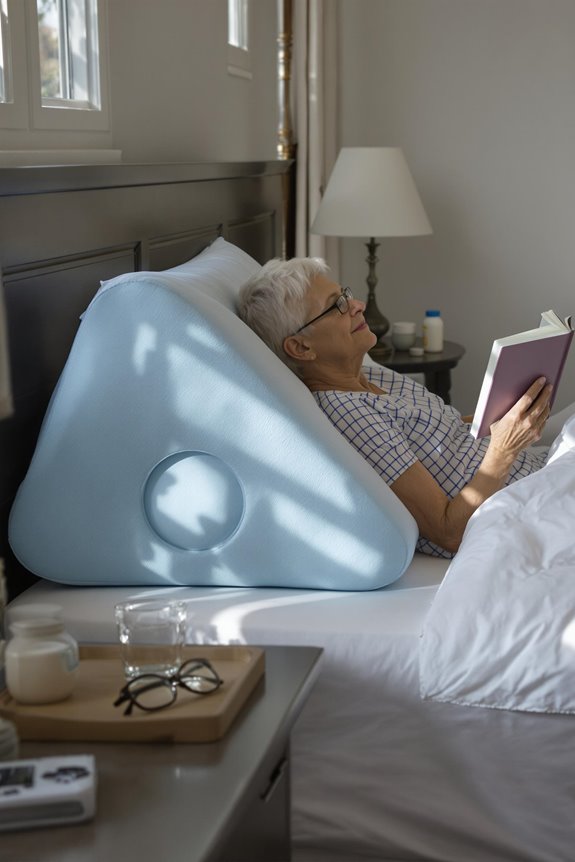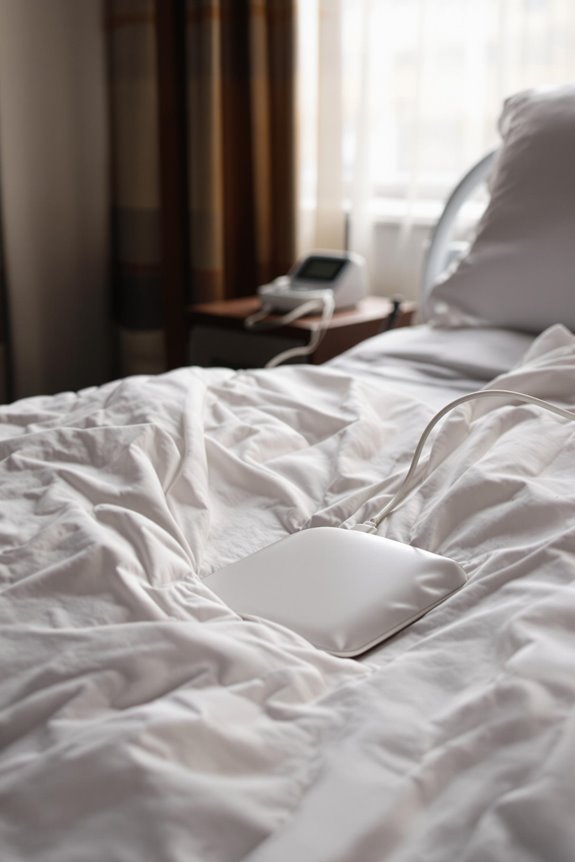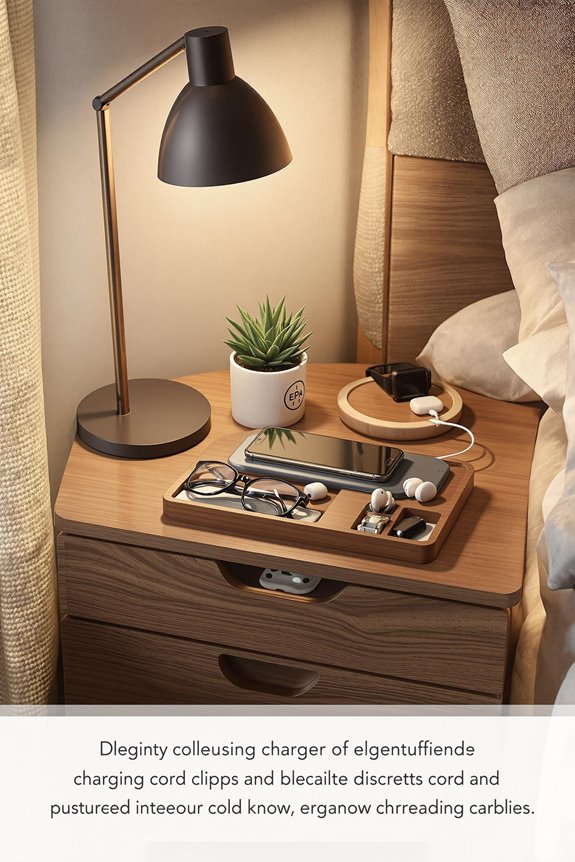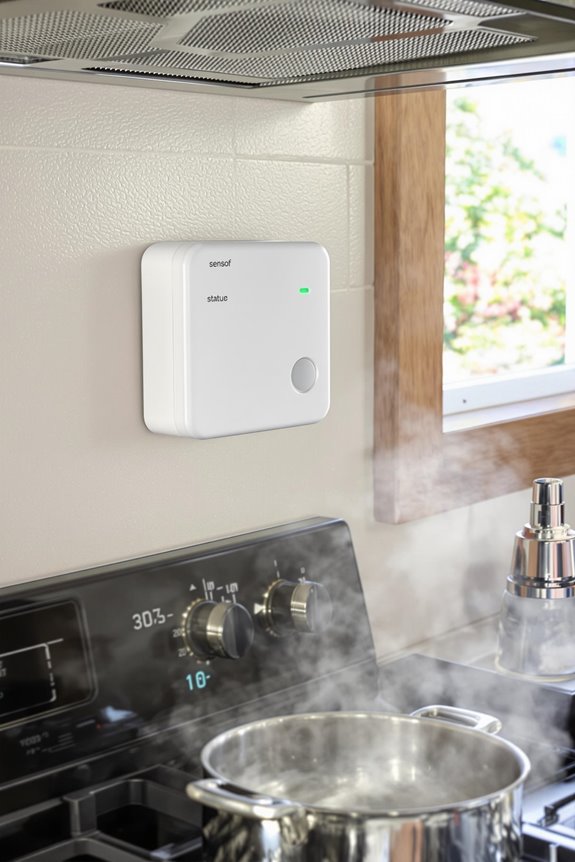As you age, maintaining personal hygiene independently becomes both more important and potentially more challenging. Bidet seats with warm water offer a practical solution that combines cleanliness with comfort, particularly for seniors with mobility issues or arthritis. You’ll find these specialized seats can transform your bathroom experience, providing gentle yet effective cleansing without the physical strain of traditional methods. What specific features make them ideal for aging adults?
Key Takeaways
- Bidet seats with adjustable warm water settings provide enhanced comfort and cleanliness for seniors with sensitive skin.
- These devices improve independence and dignity by allowing seniors to manage personal hygiene without assistance.
- Key features include easy-to-use remotes with large buttons, gentle spray options, and temperature memory functions.
- Installation typically takes under 30 minutes and requires a standard toilet and electrical outlet within 4 feet.
- Bidet seats particularly benefit those with arthritis, reduced flexibility, or post-surgery conditions by eliminating painful cleaning struggles.
Bidet Seats with Warm Water
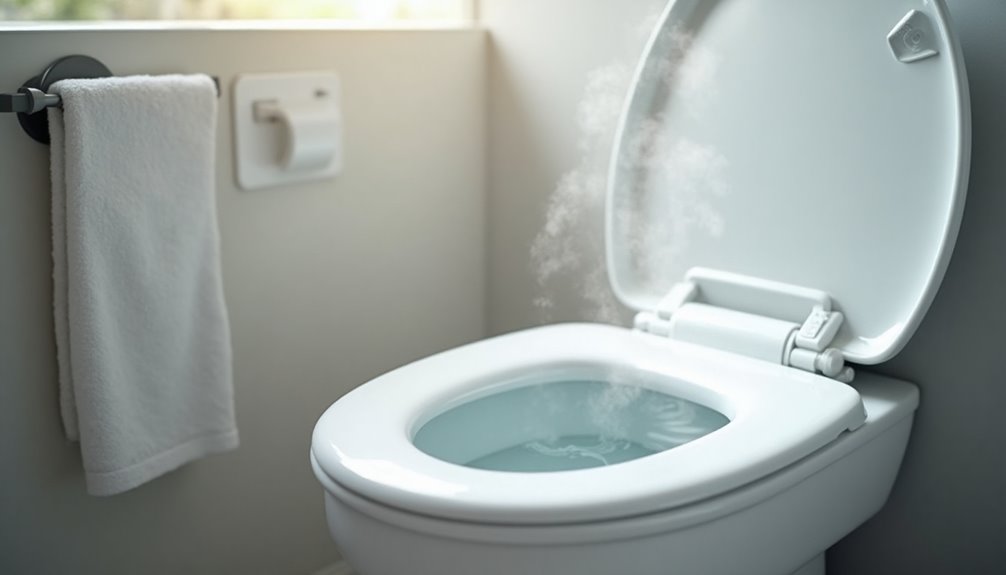
When choosing comfortable bathroom upgrades for aging parents, bidet seats with warm water stand out as a practical investment.
These innovative fixtures offer adjustable water temperature settings that provide gentle, effective cleansing without the discomfort of cold water—especially important during winter months.
Bidet seats with warm water enhance accessibility for seniors with mobility challenges, reducing the need to twist or stretch during personal hygiene routines.
The warming function isn’t just about comfort; it improves cleansing effectiveness while decreasing bathroom time and physical strain.
Many models feature user-friendly remote controls with large buttons and intuitive designs, making them easier for seniors to operate independently.
This combination of comfort and accessibility helps maintain dignity and independence—critical factors when helping parents age in place successfully.
What it is and the daily problems it solves
A bidet seat transforms the standard toilet experience into a complete hygiene solution for seniors facing daily bathroom challenges. These devices attach to existing toilets and provide a gentle stream of warm water for thorough cleaning after using the bathroom.
For seniors with limited mobility, arthritis, or balance issues, traditional wiping can be difficult, uncomfortable, or inadequate. Bidet seats solve this problem by reducing or eliminating the need to twist, bend, or reach—movements that can cause pain or increase fall risk.
Daily hygiene struggles vanish with bidets, eliminating painful twisting and bending while reducing fall risks for seniors.
The warm water feature also addresses sensitive skin concerns common for seniors, preventing irritation that rough toilet paper can cause.
Additionally, bidets promote independence in personal care, allowing many older adults to maintain privacy and dignity in their daily routines without requiring assistance.
Who benefits and when to use it
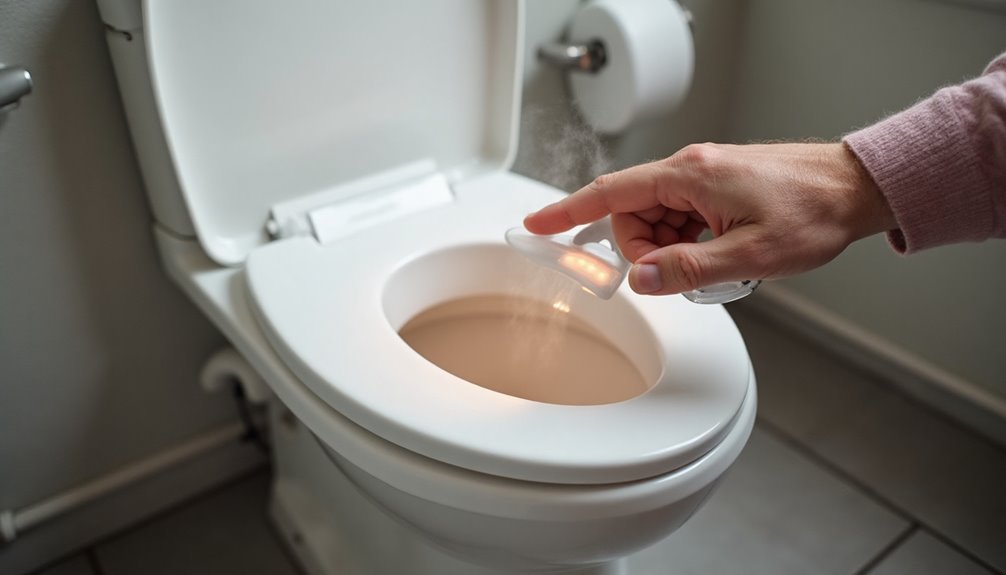
Nearly all seniors with mobility challenges can benefit from a bidet seat, making it an essential aging-in-place upgrade. Those with arthritis, reduced flexibility, or recovery from surgery find the warm water and drying features particularly valuable for maintaining independence in the bathroom.
Bidets are especially useful after toileting, before bedtime, and following activities that cause perspiration. For those with limited mobility, the hands-free cleaning reduces the need to twist or reach—a significant fall prevention advantage when balanced mobility is a concern.
Caregivers also benefit, as bidet seats reduce the awkwardness of assisting with personal hygiene. The warm water feature is particularly helpful during winter months when cold water can be uncomfortable and startling for seniors with sensitive skin.
Key features to look for
When shopping for a bidet seat for your aging parents, knowing which features truly matter can make all the difference in their comfort and independence.
Let’s look at the essential features that combine safety, ease of use, and practicality for seniors.
I’ve developed this checklist from years of helping families find the right aging-in-place solutions throughout Bergen County.
Feature checklist
Shopping for a bidet seat can be overwhelming with all the available options, so I’ve created this simple checklist to help you identify the most important features for your senior loved one.
When evaluating models, focus on these essential elements that enhance home safety and provide the most benefit:
- Temperature Controls – Look for adjustable warm water settings that offer comfort without risk of scalding, ideally with memory functions that remember preferred settings.
- Easy-to-Use Remote – Choose models with large buttons, simple interfaces, and wall-mountable options that eliminate the need to twist or reach.
- Gentle Spray Options – Guarantee the bidet offers adjustable water pressure and different spray patterns to accommodate sensitive skin and varying needs.
How to choose the right bidet seats with warm water
Why should warm water be a priority when selecting a bidet seat for your aging parent? Cold water can cause discomfort and even pain for seniors with sensitivity issues.
Warm water provides a gentle, soothing experience while improving cleanliness.
When learning how to choose the right bidet seat, consider these factors:
- Temperature control range – look for adjustable settings between 95-104°F
- Water heating method – tank storage or instant heating (tankless models use less electricity)
- Consistency of temperature – quality bidets maintain steady warmth
- Safety features – automatic temperature regulators prevent scalding
- Energy efficiency – some units have eco modes to reduce power consumption
Remember that proper warm water temperature helps encourage regular use, which is essential for maintaining hygiene independence – a key factor in successful aging in place.
Placement or installation basics
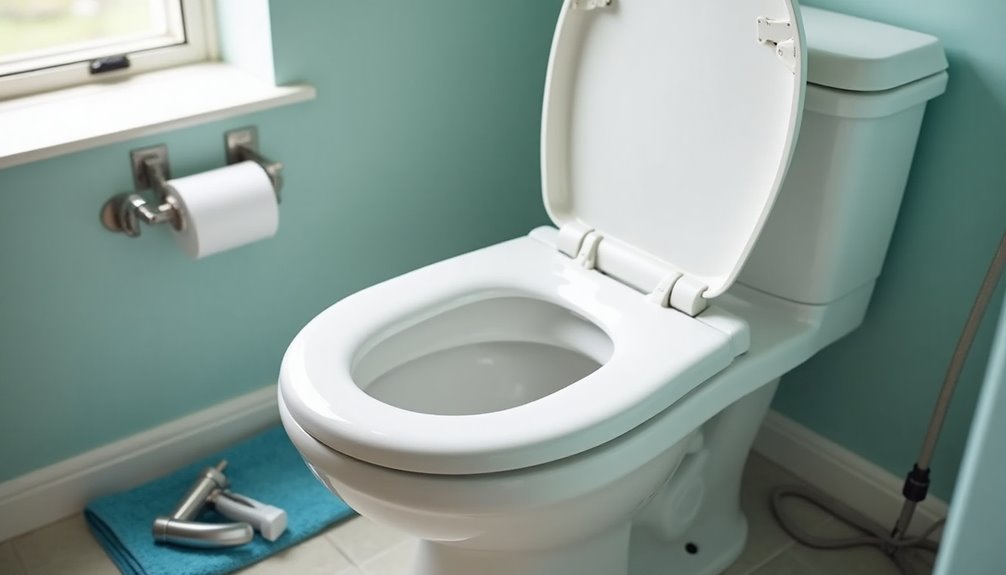
Now that you’ve found a bidet seat with the right warm water features, let’s focus on proper placement and installation.
Most bidet seats are designed to fit standard elongated or round toilet bowls, but measuring your existing toilet is essential for proper fit.
Before installation, make certain you have an electrical outlet within 4 feet of your toilet for the bidet’s power cord. If not, you’ll need to hire an electrician to install one.
The placement of your bidet control panel should be easily accessible for your loved one, typically on the right side.
Ensure the control panel faces where your loved one can easily reach it—most models position controls on the right.
Installation typically takes under an hour and requires just a few basic tools: an adjustable wrench, screwdriver, and possibly pliers.
Most manufacturers provide detailed instructions, but if you’re uncomfortable with DIY projects, consider hiring a plumber for professional installation.
Setup steps
Once you’ve purchased the right bidet seat and gathered your tools, the actual setup process is surprisingly straightforward. Most modern units follow a similar installation pattern.
First, turn off the water supply valve near your toilet and flush to empty the tank. Remove the existing toilet seat by unscrewing the bolts at the base. Clean the mounting area thoroughly before proceeding.
Next, attach the mounting bracket to the toilet bowl using the hardware provided. Slide the bidet seat onto this bracket until it clicks securely in place.
Connect the T-valve to your toilet’s water supply line, then attach the bidet’s hose to the T-valve.
Finally, plug in the bidet if it’s electric, turn the water back on, and check for leaks before testing all functions.
Costs and warranties
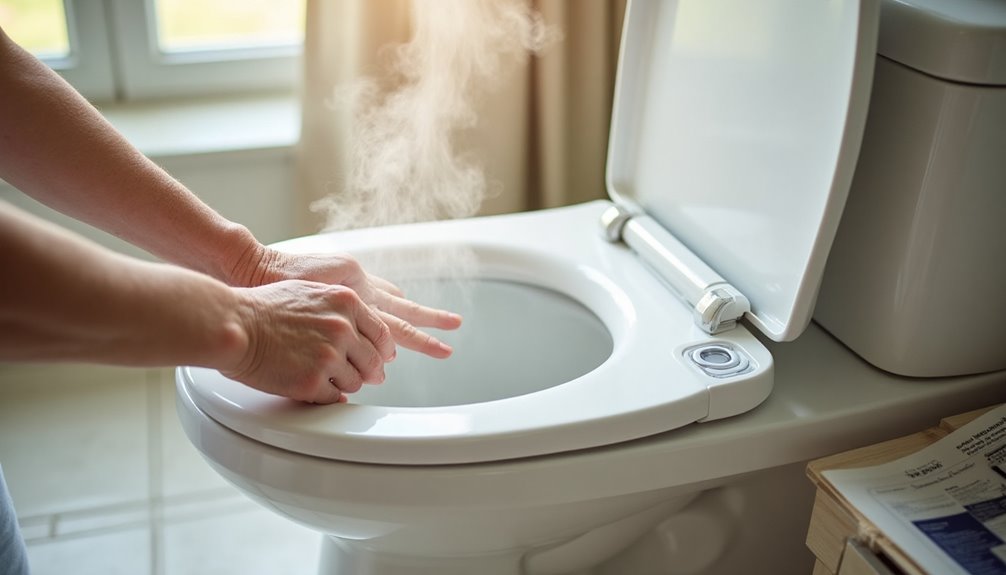
Let’s explore what you might expect to spend on a bidet seat for your loved one’s bathroom.
Most basic electric models start around $200-300, while premium options with more features can run $500-700 or more.
Having a realistic budget before shopping will help you balance the features your parent needs with what you’re prepared to invest.
Example budget
Bidet seats come in three general price tiers, each offering different features and warranty coverage to fit various budgets. When planning for your parent’s needs, consider which features provide the most value for their specific situation.
| Price Range | Features | Warranty |
|---|---|---|
| $200-$300 | Basic warm water, simple controls | 1 year limited |
| $300-$500 | Heated seat, adjustable water pressure, air dryer | 2-3 year limited |
| $500-$800+ | All premium features, remote control, memory settings | 3-5 year full coverage |
Most families find the mid-tier options ($300-$500) offer the best balance of cost and functionality. Installation costs typically run $100-$200 if you hire a plumber, though many models are designed for DIY installation to help manage your overall budget.
Daily use and upkeep
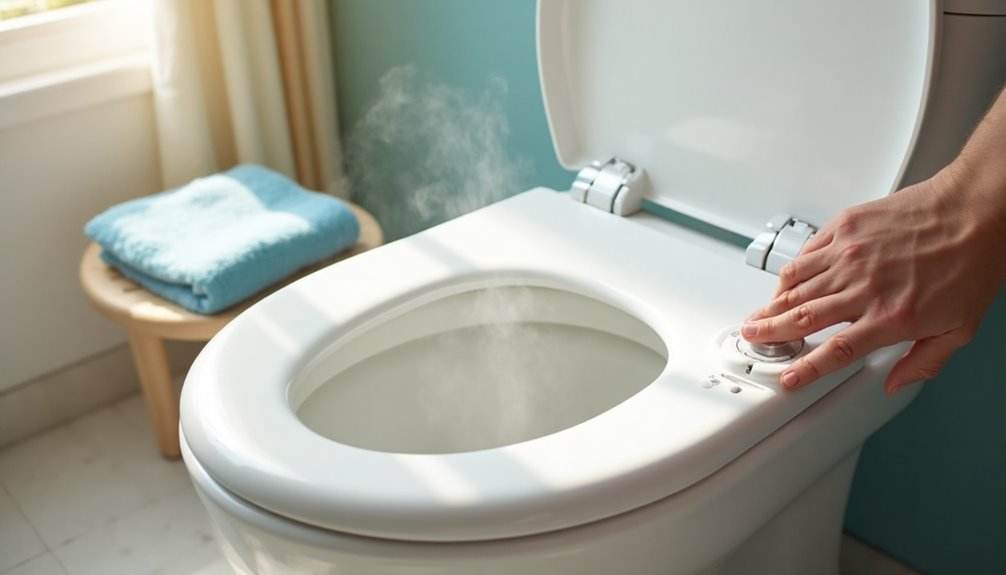
While maintaining a bidet seat might seem complicated at first, the daily care routine is actually quite straightforward. Most models require just a quick wipe-down with a soft, damp cloth and mild cleanser.
Avoid harsh chemicals that could damage plastic components or irritate skin.
For weekly upkeep, remove the nozzle (most unclip easily) and rinse it under warm water. Some units feature self-cleaning functions that sanitize automatically before and after each use.
Check water connections monthly for any leaks or loose fittings. Replace water filters according to the manufacturer’s schedule, typically every six months, to prevent mineral buildup that could affect performance.
The beauty of modern bidet seats is their low-maintenance design, allowing seniors to enjoy the benefits without complicated daily maintenance routines.
Safety tips and mistakes to avoid
Now that you’re familiar with bidet maintenance routines, understanding safety considerations can help prevent common issues.
Start by ensuring the electrical connection is GFCI-protected to prevent shock hazards in the bathroom. Always turn off the water supply before disconnecting any components during cleaning or troubleshooting.
Don’t ignore unusual noises or leaks – these often indicate developing problems that could lead to water damage. Avoid using harsh cleaners that might damage plastic components or seals.
For seniors with mobility issues, consider installing grab bars nearby for safe transfers. When helping your parents select a model, choose one with intuitive controls that don’t require significant dexterity or visual acuity.
Finally, regularly check water temperature settings to prevent accidental scalding, particularly for seniors with decreased sensitivity to heat.
Alternatives and when not to use this product
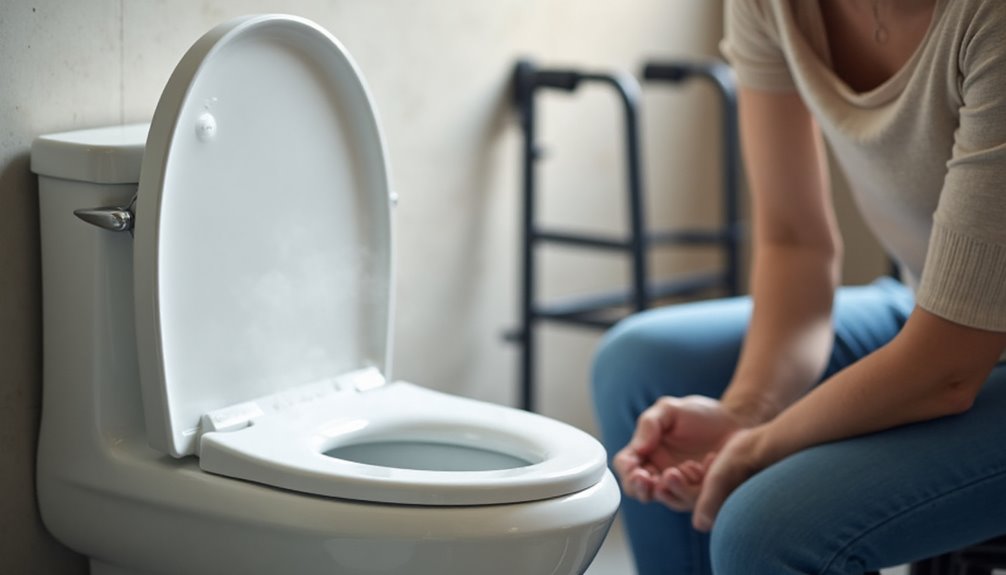
Although bidet seats offer many benefits for seniors, they aren’t the right solution for everyone or every situation. If your loved one has certain mobility issues that make transferring safely to the toilet difficult, other hygiene solutions might be more appropriate.
Some practical alternatives include:
- Handheld bidet sprayers (less expensive but require more dexterity)
- Wet wipes specifically designed for personal hygiene
- Portable bidet bottles that don’t require installation
- Bedside commode systems with built-in cleansing features
A bidet seat mightn’t be suitable if your parent’s bathroom has electrical limitations, inadequate water pressure, or if the toilet configuration is incompatible with standard attachments.
Always consult with your parent’s healthcare provider before making changes to their personal hygiene routine.
FAQs
I’ve gathered the most common questions I hear from families helping their senior parents with bidet seat decisions.
Q: How difficult is installation?
Most bidet seats install in under 30 minutes with basic tools.
Installing a bidet seat is a straightforward DIY project most homeowners can complete during a coffee break.
Q: Do they require special plumbing?
No, they connect to existing water lines with included adapters.
Q: Will it increase the water bill?
The minimal water usage adds negligibly to monthly bills.
Q: How do they help with aging in place?
Bidets promote independence in personal hygiene, reducing the need for assistance.
Q: Are electrical models safe?
Yes, they’ve multiple safety features including GFCI protection.
Q: What maintenance is required?
Most need occasional nozzle cleaning and replacement of simple filters annually.
Q: Do Medicare or insurance cover bidets?
Unfortunately, most don’t cover them, though some HSA accounts allow purchase.
Frequently Asked Questions
Do Bidet Seats Work During Power Outages?
Most bidet seats won’t function during power outages since they require electricity for warm water, heated seats, and automatic features.
However, some premium models include battery backups for limited functionality, and basic mechanical bidets without electrical components will still work for cleaning.
If power outages are common in your area, consider installing a mechanical bidet attachment or keeping cleansing wipes as backup options.
Can Bidets Help Seniors With Mobility Issues Reach Better?
Yes, bidets can greatly help seniors with mobility issues. They eliminate the need to twist, reach, and clean manually—movements that can be challenging with arthritis or limited range of motion.
Electric models with front and rear washing provide complete cleaning without requiring physical flexibility. For seniors who struggle with personal hygiene independence, bidets offer dignified self-care without assistance, maintaining privacy while reducing fall risk in the bathroom.
Are Bidet Seats Compatible With All Toilet Types?
No, bidet seats aren’t compatible with all toilet types.
Most work with elongated or round bowls, but you’ll need to check measurements first. One-piece toilets with French curves may not accommodate bidets. Non-standard toilets like square designs typically won’t work.
Electrical bidets require outlets nearby.
I recommend measuring your parent’s toilet (length, width, between mounting holes) before purchasing to confirm proper fit and function.
How Do I Introduce a Bidet to a Resistant Parent?
Start with gentle conversation about the dignity and independence benefits rather than focusing on intimate details.
Show how bidets reduce bathroom assistance needs and minimize fall risks.
Consider a demonstration on your own toilet first, or suggest a trial period with a money-back guarantee.
Frame it as a modern convenience that many people are adopting, not just a solution for aging.
Can Multiple Users Adjust Settings to Their Individual Preferences?
Yes, most modern bidet seats offer memory functions for 2-3 users.
Your parent can store their preferred water temperature, pressure, and seat warmth settings under a dedicated user profile.
Higher-end models include remote controls with labeled user buttons, while basic models typically feature a simple toggle between profiles.
This personalization guarantees comfort for everyone while respecting each user’s dignity and independence.
Bottom Line
You’ve seen how bidet seats with warm water can transform daily routines for seniors. By investing in this practical upgrade, you’ll provide yourself or your loved ones with improved hygiene, enhanced comfort, and greater independence. Remember to contemplate personal needs when selecting features, maintain your unit properly, and follow safety guidelines. With the right warm water bidet seat, you’re choosing dignity, safety, and well-being for the golden years.

